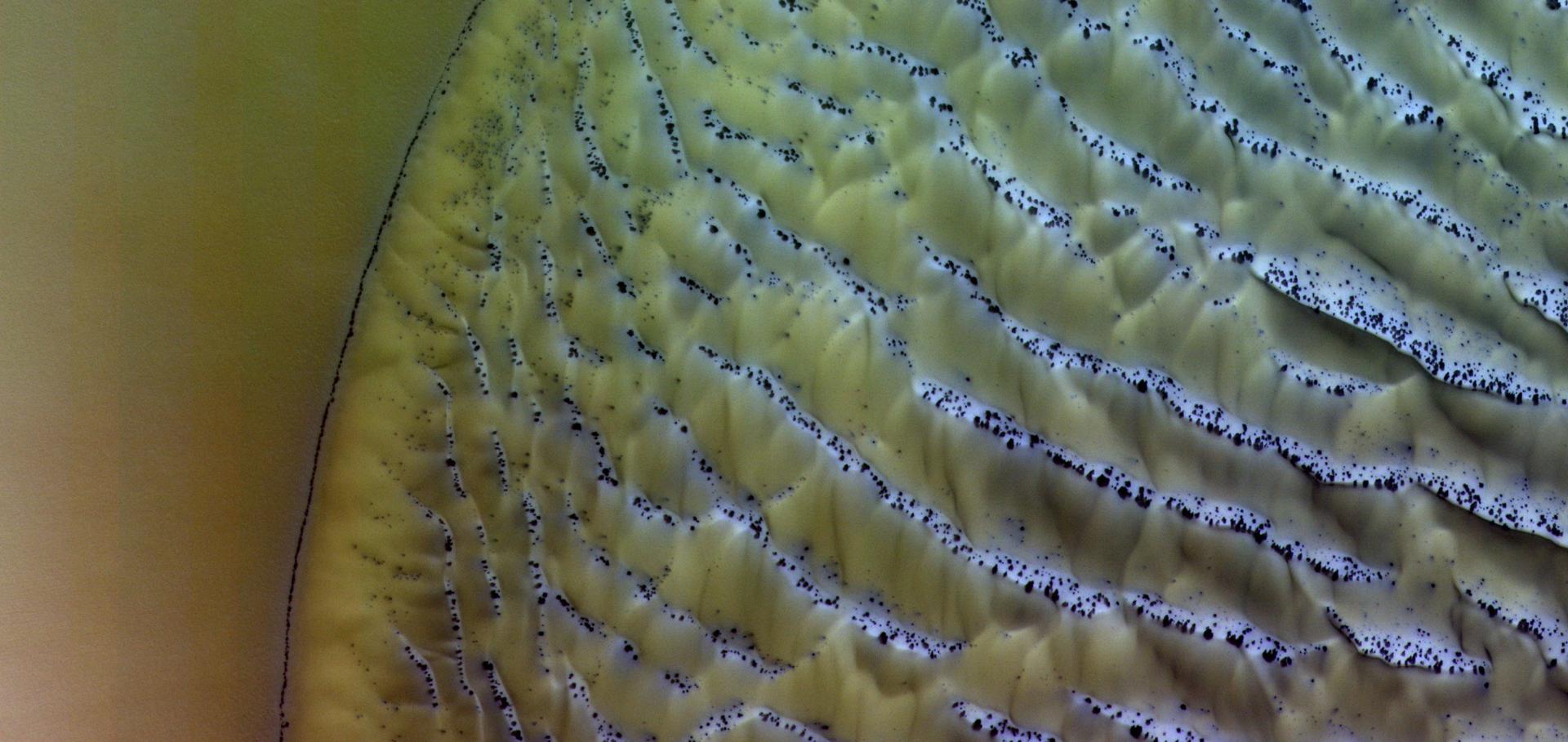Isotopic composition of water vapour in the Martian atmosphere: vertical profiles from ACS MIR on ExoMars TGO
Copernicus Publications (2024)
Climatology and diurnal variation of ozone column abundances for 2.5 Mars years as measured by the NOMAD‐UVIS spectrometer
Journal of Geophysical Research Planets American Geophysical Union 129:4 (2024) e2023JE008270
Abstract:
The distribution of Mars ozone (O3) is well established; however, our knowledge on the dayside diurnal variation of O3 is limited. We present measurements of Mars O3 column abundances, spanning Mars Year (MY) 34 to the end of MY 36, by the Ultraviolet and VIsible Spectrometer (UVIS), part of the Nadir and Occultation for MArs Discovery (NOMAD) instrument, aboard the ExoMars Trace Gas Orbiter. UVIS provides the capability to measure dayside diurnal variations of O3 and for the first time, a characterization of the dayside diurnal variations of O3 is attempted. The observed O3 climatology for Mars Years (MY) 34–36 follows the established seasonal trends observed through previous O3 measurements. At aphelion, the equatorial O3 distribution is observed to be strongly correlated with the water ice distribution. We show that the early dust storm in MY 35 resulted in a near-global reduction in O3 during northern spring and the O3 abundances remained 14% lower in northern summer compared to MY36. Strong latitudinal and longitudinal variation was observed in the diurnal behavior of O3 around the northern summer solstice. In areas with a weak O3 upper layer, O3 column abundance peaks in the mid-morning, driven by changes in the near-surface O3 layer. In regions with greater O3 column abundances, O3 is observed to gradually increase throughout the day. This is consistent with the expected diurnal trend of O3 above the hygropause and suggests that in these areas an upper O3 layer persists throughout the Martian day.Evidence of rapid hydrogen chloride uptake on water ice in the atmosphere of Mars
Icarus Elsevier 411 (2024) 115960
Abstract:
In 2020, hydrogen chloride (HCl) in the gas phase was discovered in the atmosphere of Mars with the Atmospheric Chemistry Suite (ACS) onboard the Trace Gas Orbiter (TGO) mission (Korablev et al., 2021). Its volume mixing ratio (VMR) shows a seasonal increase of up to 5 ppbv during the perihelion season, followed by a sudden drop to undetectable levels, contradicting modelling estimates of the HCl lifetime of several months. In the Earth's stratosphere, heterogeneous uptake of HCl onto water ice is known to be a major sink for this species. This reaction is now also considered when modelling HCl abundances in the Martian atmosphere. In this work, we use simultaneous measurements of water ice and HCl obtained by the ACS instrument to find particular structures in the vertical profiles as detached gas layers at ice-free altitudes (“ice-holes”). From these particular examples we conclude that the heterogeneous uptake of HCl onto water ice operates on Mars and is a fast mechanism regulating the HCl abundance in the atmosphere of Mars.Relationships between HCl, H2 O, aerosols, and temperature in the Martian atmosphere Part II: quantitative correlations
University of Oxford (2024)
Abstract:
NB: this dataset has now been SUPERSEDED by the version at https://ora.ox.ac.uk/objects/uuid:31ee4ec6-ad9c-4804-be86-da5aba057fd2.
Data generated for and supporting the Publication: Relationships between HCl, H2 O, aerosols, and temperature in the Martian atmosphere Part I: climatological outlook for the Journal of Geophysics Research.
Relationships between HCl, H2 O, aerosols, and temperature in the Martian atmosphere Part I: climatological outlook
University of Oxford (2024)


